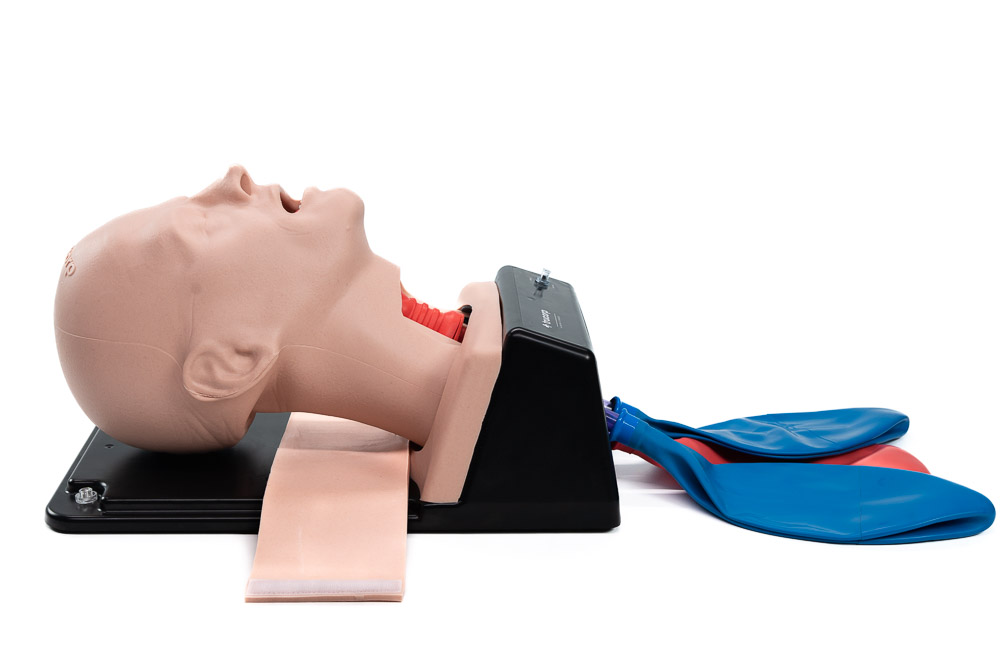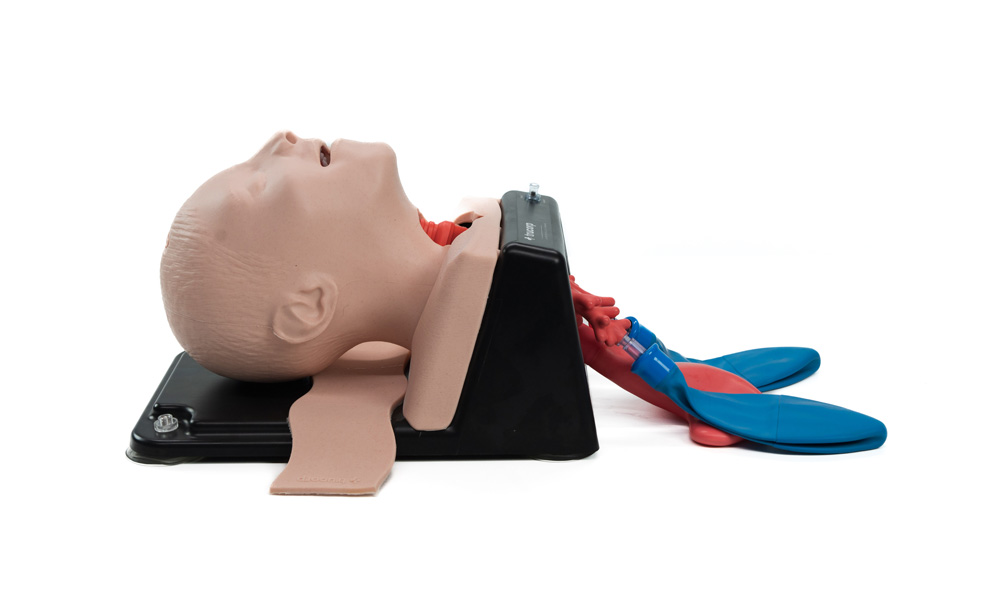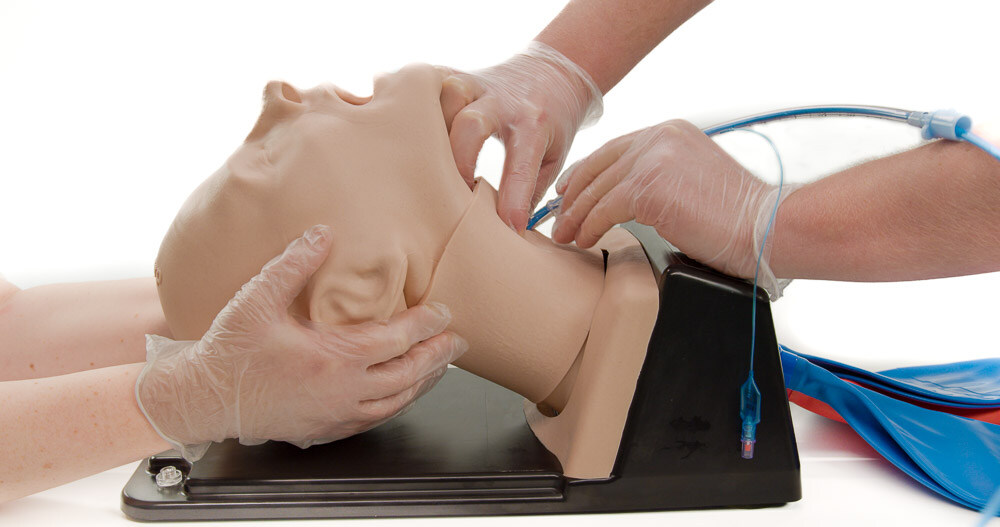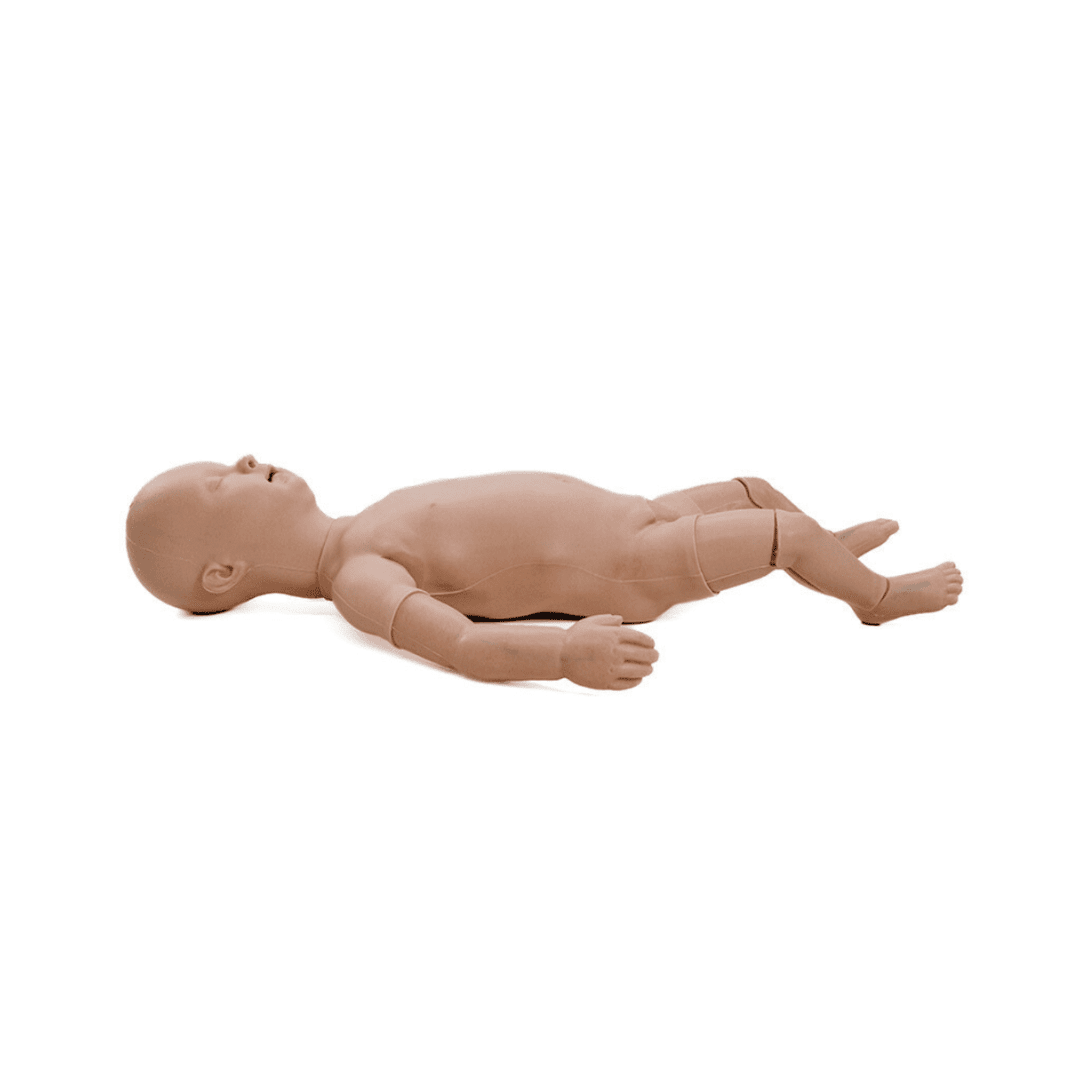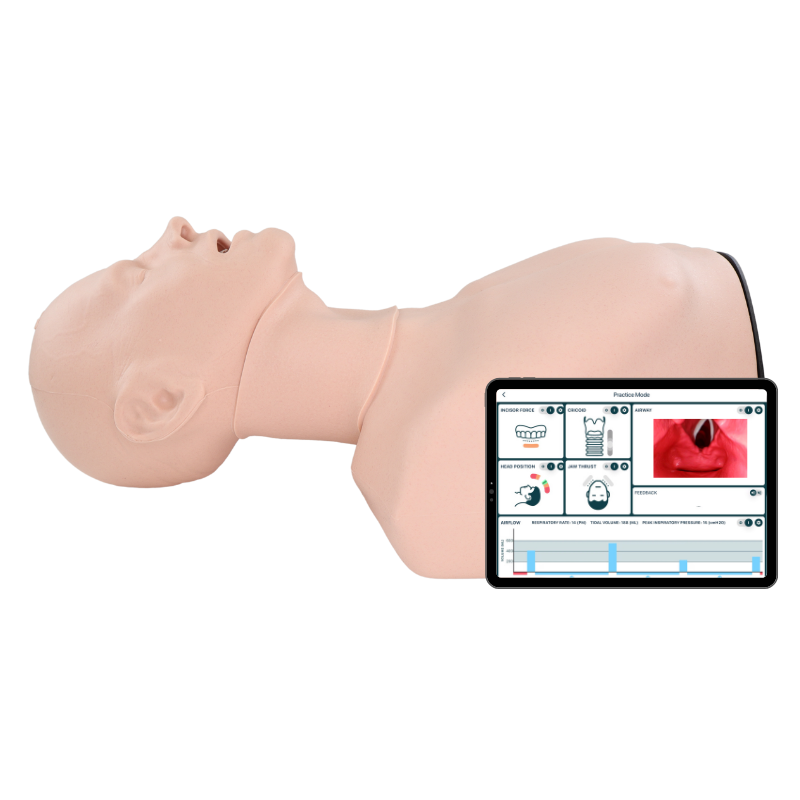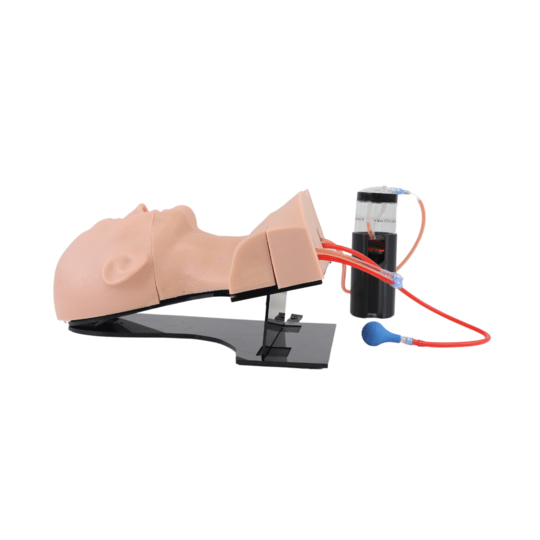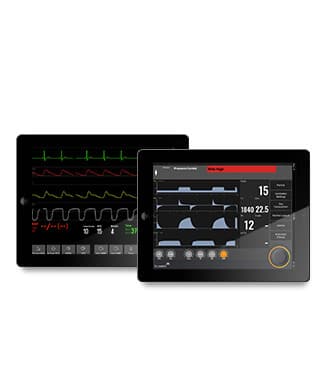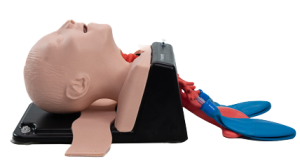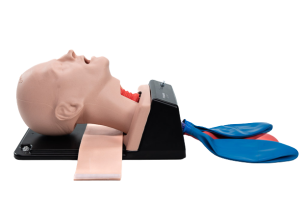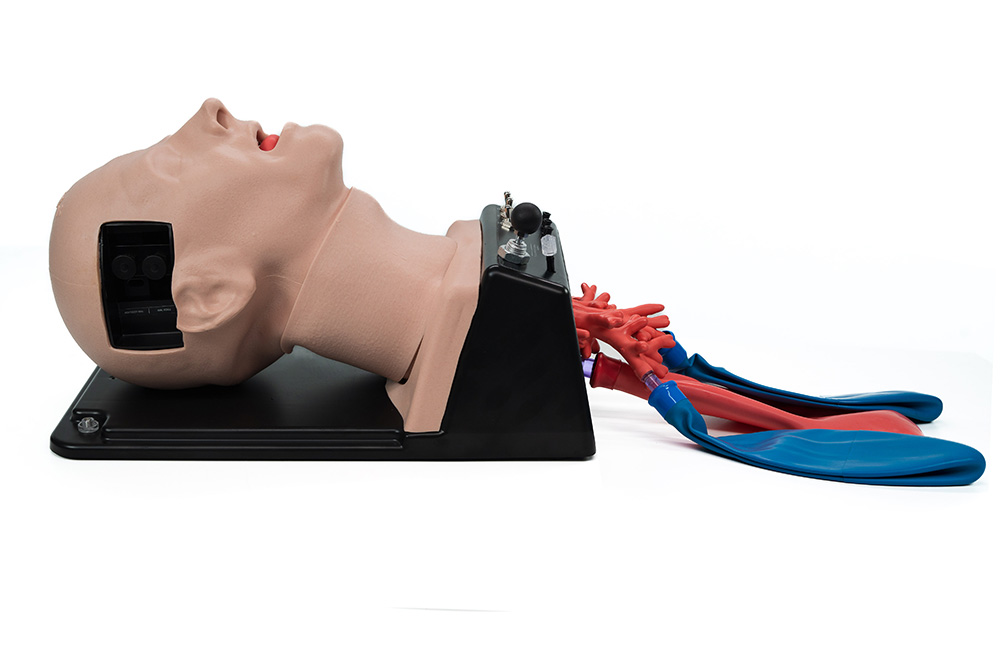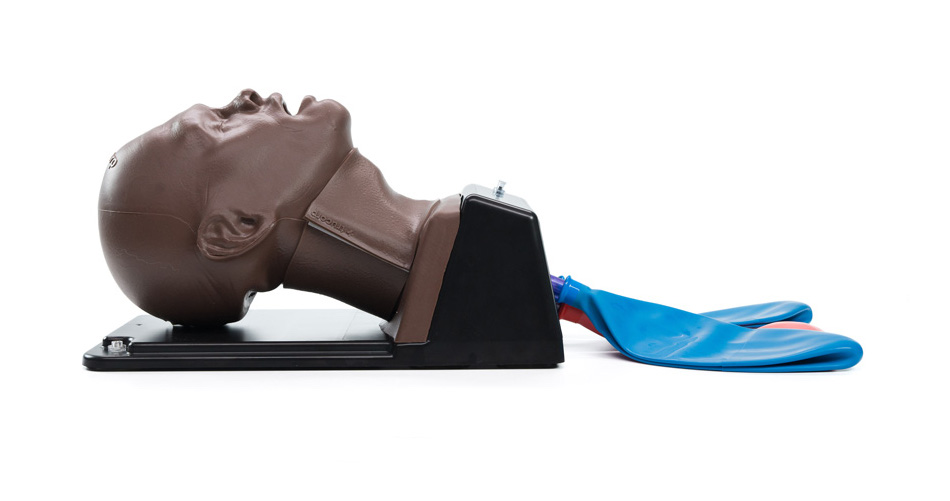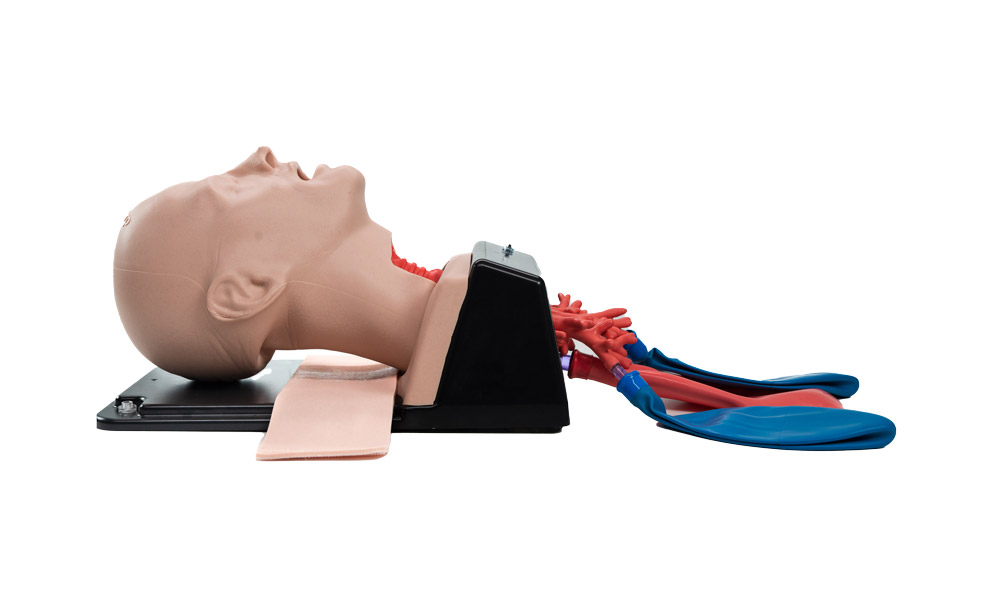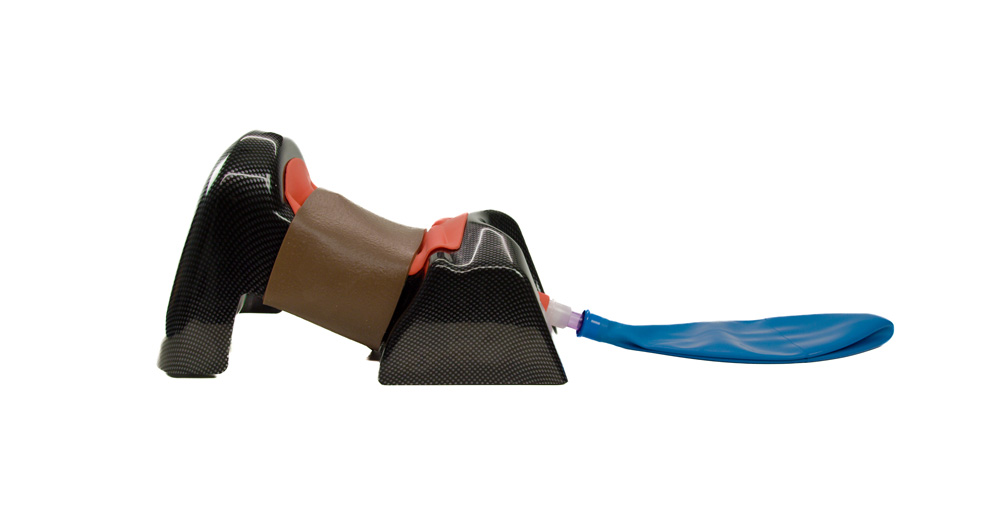Surgical Cricothyrotomy Airway Manikins
LIFELIKE & DURABLE SURGICAL AIRWAY TRAINERS
Emergency surgical airway training can include several different methods including cricothyrotomy (also called cricothyroidotomy or coniotomy).
TruCorp airway manikins are ideal for demonstrating and practicing both cricothyrotomy and tracheostomy as well as many other airway management techniques.
True to life internal and external anatomy includes an inflatable tongue to simulate edema, visible and palpable landmarks and positive user feedback.
Manikin Features:
- Anatomical features constructed using CT DICOM data from real patients
- Palpable cricoid landmarks, laryngeal cartilages and tracheal rings
- Easy identification of sternal notch
- Skin covering has lifelike texture for added realism
All our cricothyrotomy trainers can be used to teach and practice:
- Needle cricothyrotomy
- Surgical cricothyrotomy
- Percutaneous cricothyrotomy using Seldinger technique
- FONA airway management
- Percutaneous tracheostomy
- Fiberoptic laryngoscopy
- Double nasotracheal intubation
- Air jet ventilation
- Endotracheal intubation & difficult airway management skills
- Identification of tracheal deviation and jugular vein distension
Replaceable larynx & neck skin for surgical cric trainers
TruCorp replacement parts and consumables for cricothyrotomy trainers are fast and easy to replace, ideal for efficient practice in a busy classroom setting:
- Adult wrap around neck skin attachments
- Child wrap around neck skin attachments
- TruMan Trauma wrap around neck skin
- Adult larynx inserts
- Child larynx inserts
Additional options include replaceable lung bags.
CRICOTHYROTOMY SIMULATOR PLUS PATIENT MONITOR APP
The TruMonitor app is an easy training platform simulating a patient monitoring device on your Apple or Android smartphone or tablet.
Our TruMonitor patient monitor simulator is user-friendly and can be used alongside our cricothyrotomy trainers to integrate clinical decision-making, crew resource management and clinical task/procedure training.
Using the TruMonitor app will help identify latent threats within your healthcare setting with cooperative training using existing equipment and systems. TruMonitor is perfect for EMS environments, simulation centers and university teaching hospitals with both pre-hospital and hospital bedside care.
ALL TRUCORP SURGICAL CRIC TRAINERS:
- TruMan Trauma X®
- AirSim Combo X
- AirSim Combo Bronchi X
- AirSim Child Combo X
- AirSim Child Combo Bronchi X
- TruCric
Needle Cricothyrotomy
Needle cricothyrotomy is a preferred emergency airway technique in children and infants because it’s easier to perform on pediatric anatomy and has less risk of damaging the larynx. 4
A needle is used to puncture the cricothyroid membrane (in some cases a small incision may be made first to make it easier to insert the needle).
The needle and an over-the-needle catheter enter through the lower half of the membrane. The syringe and needle are removed and the catheter provides a temporary secure airway.5
The benefit of needle cricothyrotomy is reduced risk of complications if the right location is not correctly identified on the first attempt (compared to misidentification with a scalpel).
Surgical Cricothyrotomy
Surgical cricothyrotomy, also called open cricothyrotomy, involves making a vertical incision through the skin and identifying the cricothyroid membrane.
The membrane is incised horizontally and opened using a gloved little finger or blunt end of the scalpel, allowing an endotracheal or tracheostomy tube to pass through.6
Care must be taken not to cut the cricoid or thyroid cartilage.
Percutaneous Cricothyrotomy Using Seldinger Technique
Percutaneous cricothyrotomy using the Seldinger technique is also called the Melker technique or Melker Seldinger technique. The Seldinger Technique in cricothyrotomy is performed by advancing a wire guide through a hollow needle and into the trachea.
The needle is removed and the wire guide is used to guide the insertion of an airway catheter/dilator assembly over the wire and into the trachea.
After the wire guide and dilator are removed, the airway catheter is secured and attached to a ventilator device.
The benefit of this technique is that the guidewire maintains airway access until the catheter is in place.7
FONA airway management training
Cricothyrotomy is one of multiple front of neck access (FONA) techniques for airway management. Adequate training is essential to build and retain the skills needed to successfully perform FONA airway management in an emergent situation.
Our front of neck access trainers are ideal for efficient, true-to-life practice in FONA for anaesthesia airway management, intervention in CICO events and difficult airway management.
Cricothyrotomy vs Tracheostomy
Cricothyrotomy and tracheostomy are both emergency surgical airway techniques used as a last resort in a ‘can’t intubate can’t ventilate’ (CICV) scenario.
A cricothyrotomy pierces the cricothyroid membrane to establish an airway. The cricothyroid membrane is in the larynx (voice box) just below the thyroid cartilage (Adam’s apple) in the front of the neck.
A tracheostomy creates a surgical opening (stoma) in the trachea, typically in an operating room under anesthesia, to provide a temporary or permanent alternative airway.
A cricothyrotomy is generally considered to be less difficult and less risky than a tracheostomy in emergency situations.1 If long-term breathing assistance is required, a cricothyrotomy will usually be replaced by a tracheostomy.2
Sources:
- Mayo Clinic. [Tracheostomy] 2018
- Peep Talving, MD, Ph.D.; Joseph DuBose, MD; Kenji Inaba, MD; et al. Conversion of Emergent Cricothyrotomy to Tracheotomy in Trauma Patients. [JAMA Network] 2010
- Helman, Anton. Episode 69 Obesity Emergency Management. [Emergency Medicine Cases] 2015
- Manoj K Mittal, MD, MRCP (UK), FAAP. Needle cricothyrotomy with percutaneous transtracheal ventilation. [UpToDate] 2017
- Markowitz, Joshua E, MD, RDMS, FACEP. Surgical Airway Techniques Technique. [Medscape] 2018
- Nickson, Chris. Surgical Cricothyroidotomy. [Life in the Fastlane] 2017
- Bonz, James W, MD. Percutaneous Cricothyrotomy. [Jove] 2018
